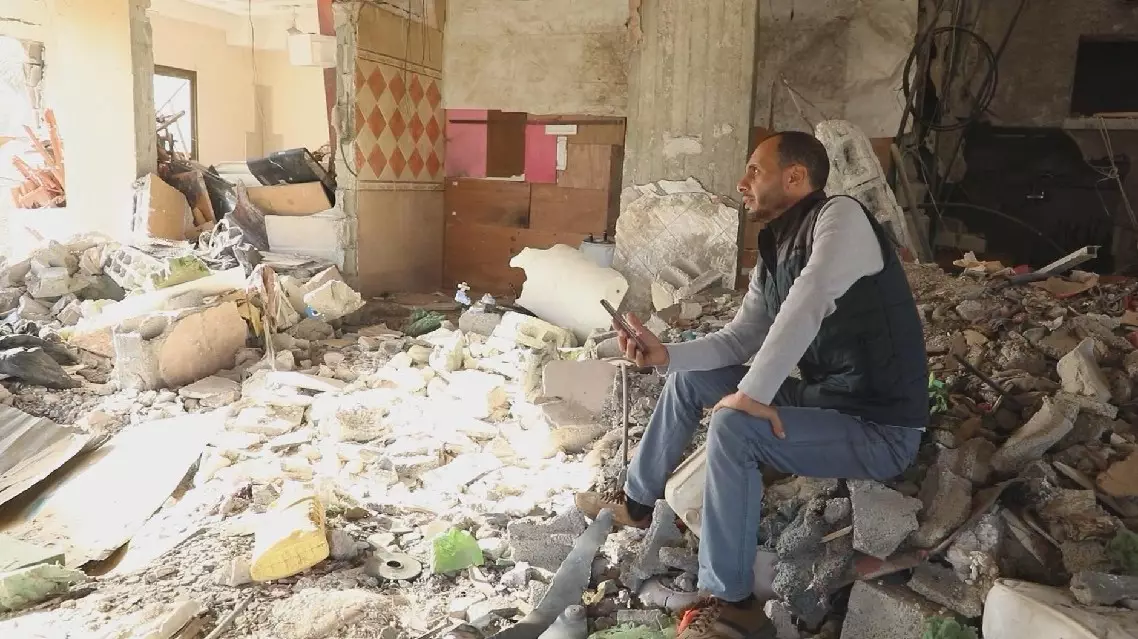Gazans displaced by Israeli attacks are struggling to survive the harsh living conditions amid rubble and a worsening health crisis, with their prospects for survival growing dimmer as winter looms.
Israel's military operation in the Gaza Strip has caused one of the world's biggest humanitarian crises and unprecedented levels of infrastructure damages.
Gaza's health ministry said more than 45,000 Palestinians have died since October 7, 2023.
The infrastructure in Gaza has been devastated, with more than 66 percent of residential buildings damaged.
According to the United Nations, 90 percent of Gaza's population has been displaced, and 84 percent of Gaza has been subjected to forced Israeli evacuation orders, with most Palestinians trapped in just 10 percent of the coastal strip.
According to a report by the United Nations Office for the Coordination of Humanitarian Affairs (OCHA), approximately 986 health workers have been killed, and only 17 of 36 hospitals in Gaza have remained. The health sector has collapsed in Gaza.
Throughout 2024, the Israeli army expanded the scope of its military operation in the Gaza Strip. It invaded the cities of Khan Yunis and Rafah in the south, and the cities in the northern Gaza Strip, one after the other, besieging and preventing humanitarian supplies from reaching them.
Since the beginning of October this year, the Israeli army has launched a concentrated military operation in the northern Gaza Strip, which is still ongoing.
"The situation in the Gaza Strip has been catastrophic and is moving from bad to worse. Civilians have been paying a heavy cost due to the hostilities and the fighting. They are entrapped in a closed loop of displacement, hunger, lack of safety. Civilians in the northern Gaza Strip for several weeks have been facing horrendous situations. They are exposed to all kinds of risks," said Hisham Mohanna, spokesman for the International Committee of the Red Cross (ICRC) in Gaza.
Nurse Ashraf Al-Attar was the sole survivor after an Israeli missile destroyed his home.
"A crime of execution was committed against my entire family, my children and my wife. We were sitting at home like any family who are safely in their home. We did not pose a threat to anyone, and we were not warned in advance. Suddenly, a missile hit us and ripped my children into pieces," he said.
Elderly civilian Talaat Saksak pitched his tent on the beach to escape the bombings, but the tide posed a threat while they were sleeping.
"Of course we were drowning, our belongings are gone. Where will we get new things in the current situation? There's nothing to buy, and no money to buy things with. When the sea water flooded us, we were seriously affected," said Talaat Saksak.
Mohammed Awad is one of the Palestinian journalists who managed to leave Gaza for Cairo before the Rafah crossing was closed. His family members were killed in an Israeli bombardment, while the number of journalists killed in the Strip has risen to 196.
"I moved to Cairo after the long and extended displacement process and after my family was targeted on the sixth of January. I moved here to work through the Al Arabiya channel office to follow up on field news in the Gaza Strip, and coordinate with my colleagues who are still working in the field in order to transmit their images," he said.

Displaced Gazans face desperate struggle to survive as winter sets in

Displaced Gazans face desperate struggle to survive as winter sets in

Displaced Gazans face desperate struggle to survive as winter sets in









